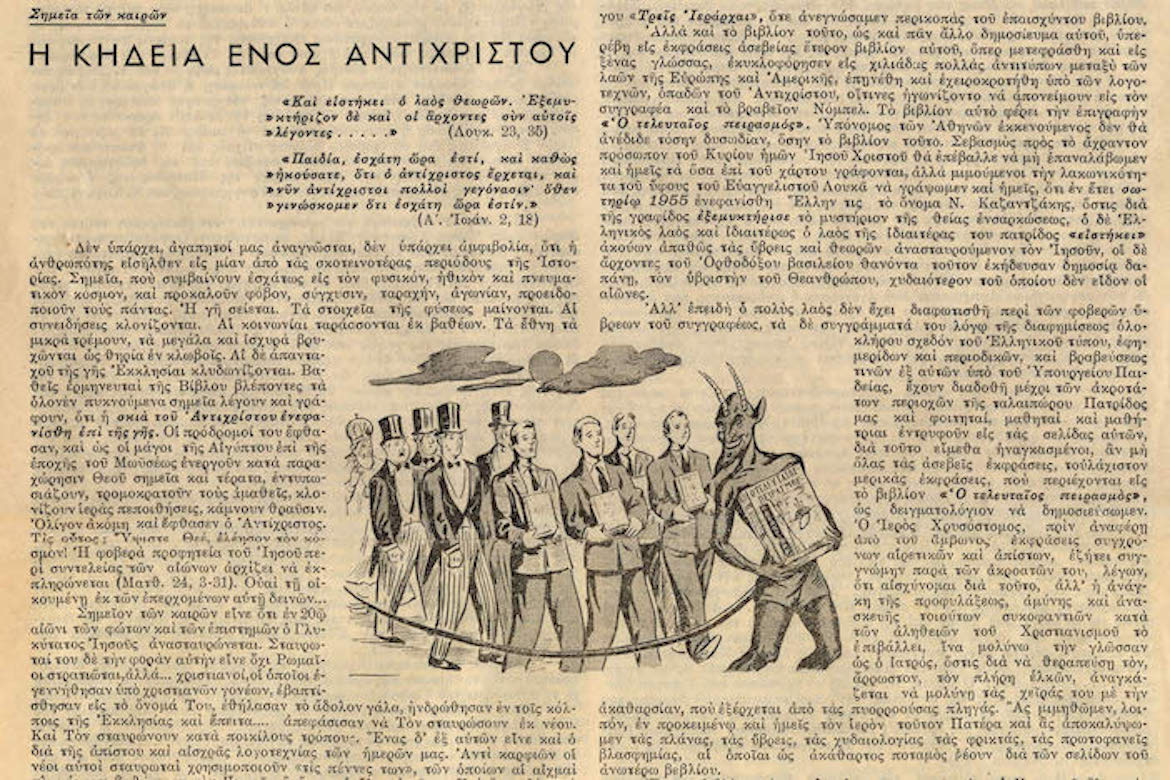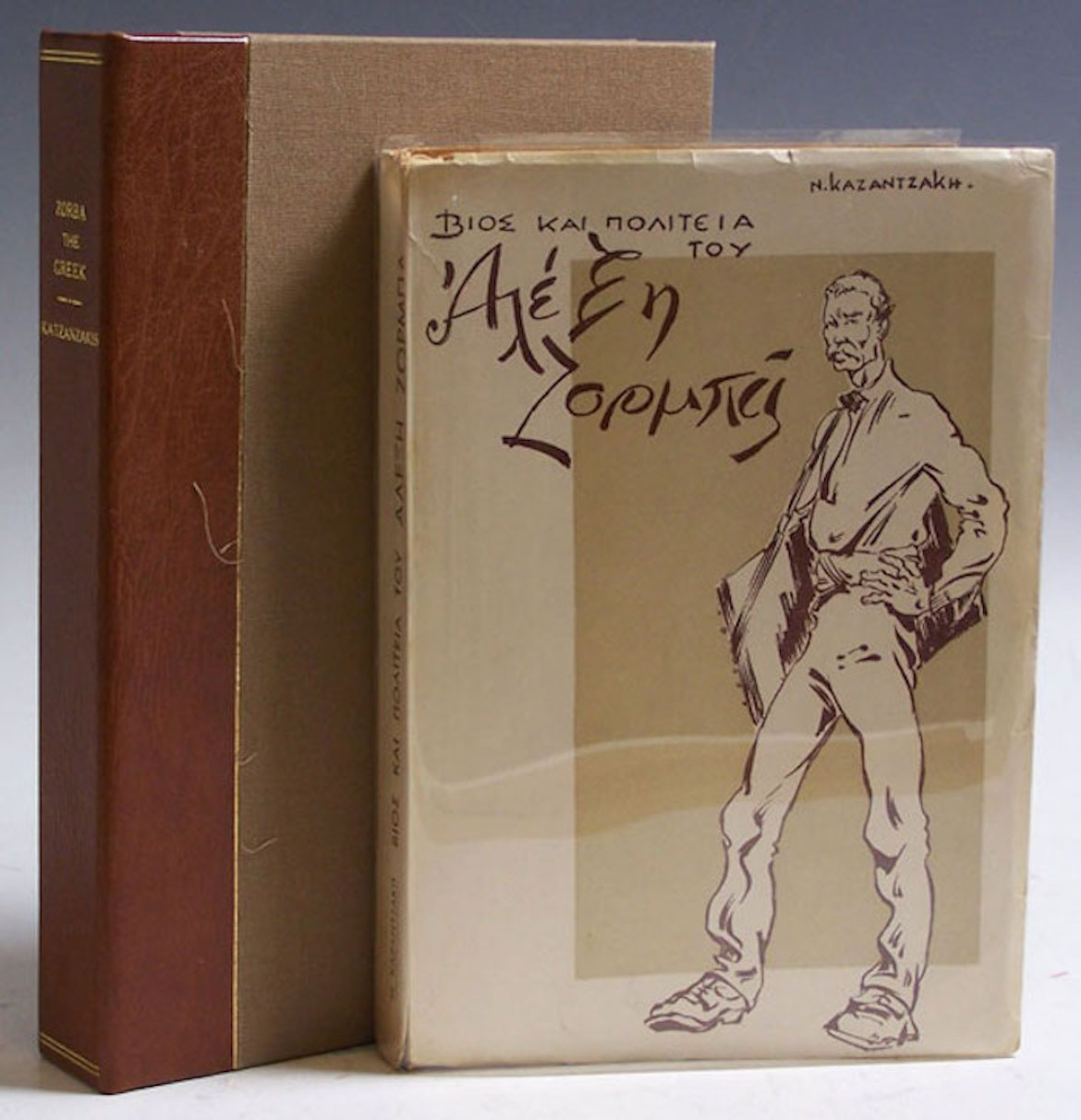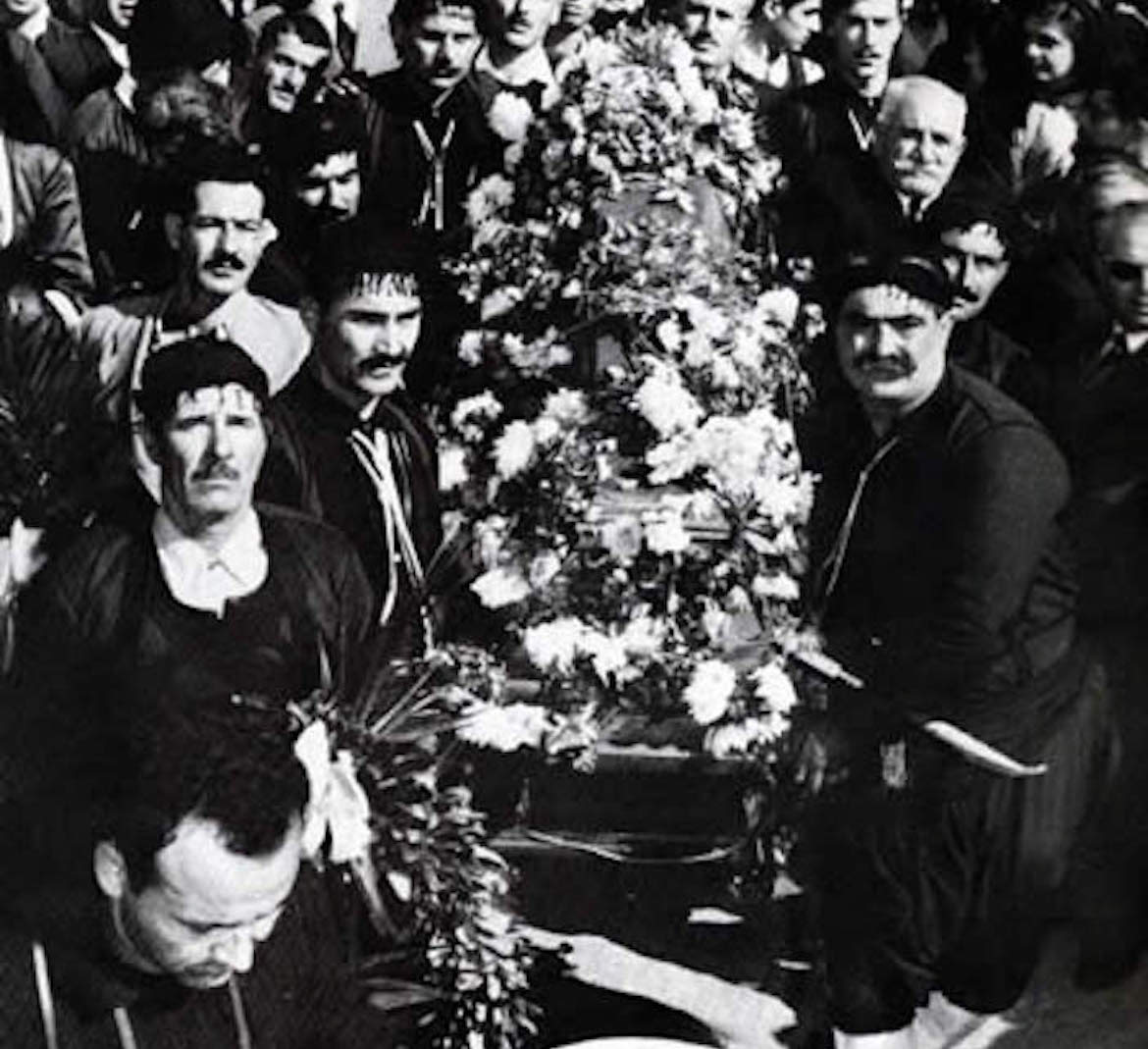Nikos Kazantzakis was Greece’s most prolific writer and remains in history as one of the most famous contemporary Greek worldwide.
Kazantzakis published dozens of novels, poems, plays and short stories and his works have been translated into practically every written language on the planet.
His most famous work is, by far, Zorba the Greek, which was turned into a film in 1964.
Kazantzakis dabbled in communism, atheism and numerous radical ideologies, making him one of the most controversial figures in Greece and the world during the 20th century.
The Cretan was born a citizen of the Ottoman Empire on February 18, 1883, while Crete was still under Turkish rule.
Even in death, however, Kazantzakis remained controversial. A massive funeral procession took place in Heraklion on November 5, 1956 when a newspaper printed a cartoon depicting the procession and referring to him as the Anti-Christ.
Some fascinating facts from Kazantzakis’ life — and death…
Kazantzakis’ most famous novel, Zorba the Greek (Originally called ‘The Life and Times of Alexis Zorbas’) was about a real-life friend of his named Yorgis Zorbas, who taught him how to love life and not fear death. Kazantzakis wrote the novel in 1941 after he learned of his friend’s death because he wanted to keep his memory and life lessons alive.
At a 1999 auction, a first edition (1946) signed copy of Kazantzakis’ “Zorba the Greek” was estimated to get £250 but instead sold for £4,250 ($6,035). It was the first time in 35 years that a copy of the original Greek first edition had surfaced.
In 2005 an inscribed first French (1947) edition made £900 in a Sotheby’s sale and that same year a copy of the 1953 first U.S. edition, once owned by novelist Bernard Malamud, brought $360 at Christie’s New York.
The highest sale price for any Kazantzakis book was $3,220 at Christie’s New York in 1999 — for a 1960, U.S. edition of his most controversial novel, The Last Temptation of Christ. Why the big price? The book had belonged to Marilyn Monroe.
Kazantzakis’ book “The Last Temptation of Christ” was one of the most controversial books of all time, often appearing on “banned books” lists and even prompting official condemnation from both the Roman Catholic and Greek Orthodox Churches, prompting one 1950s writer to remark that it was the first time since 1054 that the two Churches had agreed on anything.
In 1954, the Roman Catholic Pope himself placed the book on the Roman Catholic Index of Forbidden Books. Subsequently, Kazantzakis telegraphed the Vatican a phrase from Christian apologist Tertullian: “Ad tuum, Domine, tribunal appello” (I lodge my appeal at your tribunal, Lord), basically telling the Catholic leaders that God — not the Church — will be his final judge.
Controversy followed more than three decades later when Martin Scorsese made the book into a film in 1988. Widespread protest from Christian fundamentalists in the United States spread, and the film was banned outright in more than a dozen countries including Turkey, Mexico, Chile, Argentina, the Philippines and Singapore. In Paris, a cinema that wouldn’t give in to protesters to cancel the premier was torched by Christian demonstrators.
In 1957, Kazantzakis lost the Nobel Prize for Literature to Albert Camus by one vote. Camus later said that the Greek writer deserved the honor “a hundred times more” than himself. In total Kazantzakis was nominated in nine different years.
Kazantzakis’ literature has resulted in three Academy Awards and eight nominations. The film version of “Zorba the Greek” by director Michael Cacoyiannis received seven nominations and won three awards in 1964. Martin Scorsese was nominated for Best Director for his film adaptation of “The Last Temptation of Christ” in 1988.
Captain Michalis is Kazantzakis’ second-most widely known and published novel, after Zorba. Published in 1953, the book tells the story of a Cretan rebellion against the Turks in 1889. The book was published under the title “Freedom or Death” in the United Kingdom and in subsequent English editions, and it has been translated in nearly three dozen languages — including Turkish.
Kazantzakis’ literary work was condemned by many in the Greek Orthodox Church and a movement to excommunicate him reached Ecumenical Patriarch Athenagoras, who rejected the proposal.
The writer’s response to those clergy and bishops who sought to excommunicate him:
“You gave me a curse, Holy fathers, I give you a blessing: may your conscience be as clear as mine and may you be as moral and religious as I” (Greek: “Μου δώσατε μια κατάρα, Άγιοι πατέρες, σας δίνω κι εγώ μια ευχή: Σας εύχομαι να ‘ναι η συνείδηση σας τόσο καθαρή, όσο είναι η δική μου και να ‘στε τόσο ηθικοί και θρήσκοι όσο είμαι εγώ.”
Even though Kazantzakis was never excommunicated, he remained a controversial figure for his spiritual and political views — even after his death. The Orthodox Church ruled out his burial in a cemetery and thus, was buried inside the rampart walls that surround the city of Heraklion, the place of his birth.
Etched in stone, his epitaph has become one of the most famous phrases in Greek history:
“I hope for nothing. I fear nothing. I am free.” (Δεν ελπίζω τίποτα. Δε φοβἀμαι τίποτα. Είμαι λέφτερος.)
Kazantzakis died in Breisgau, Germany on October 26, 1957 and when his body arrived in Athens, the Greek Orthodox Church refused it to lie in state and the body was transferred to Crete, where it is viewed at the St. Minas Cathedral before a funeral and massive procession through the city to the wall where he was buried on November 5, 1957.
Is The Pappas Post worth $5 a month for all of the content you read? On any given month, we publish dozens of articles that educate, inform, entertain, inspire and enrich thousands who read The Pappas Post. I’m asking those who frequent the site to chip in and help keep the quality of our content high — and free. Click here and start your monthly or annual support today. If you choose to pay (a) $5/month or more or (b) $50/year or more then you will be able to browse our site completely ad-free!

Click here if you would like to subscribe to The Pappas Post Weekly News Update



